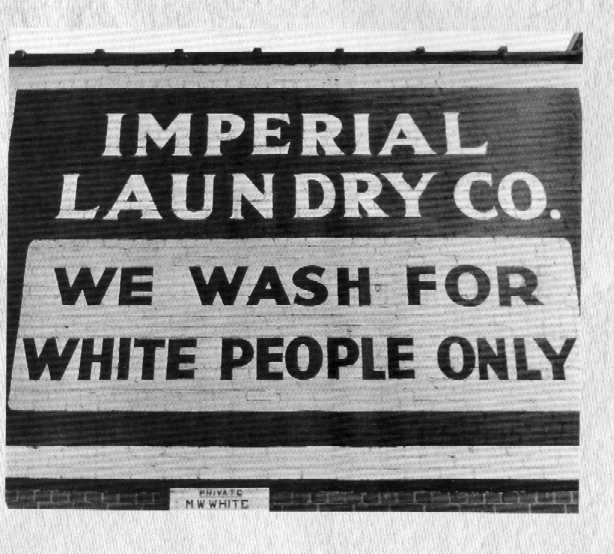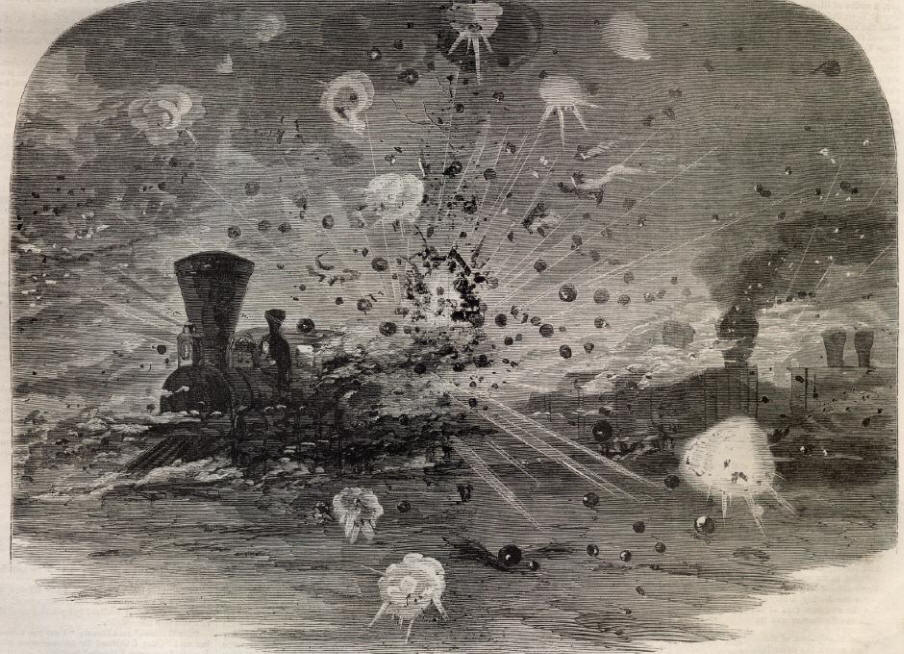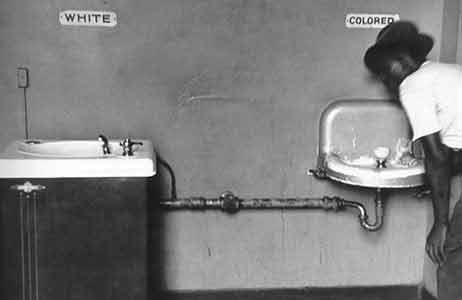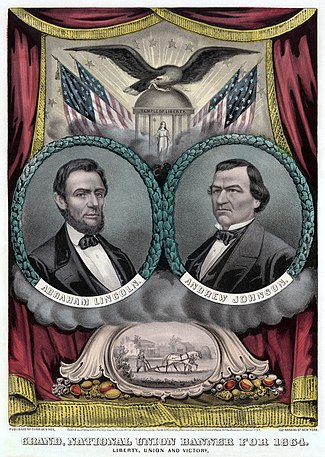This blog page is being used by Belthorne Design Studios to share research information relating to US History from 1850 to 1900 and any other fantastic graphic design creations. Final quilt piece information can be found at the Quilting a Nation page (please click link to the right).
Sunday, May 29, 2011
battle of gettysburg marley deborahs class
bit.ly/kTmzFJ
"we see the poor fellows... lying on the ground with the mangled stump of an arm or a leg, dripping their life blood away; or with a cheek torn open, or a sholder mashed. and i say, alas! hear not the roar as they stretch upon the ground with upturned faces and open eyes, through a shell should burst at their very ears."
"we see the poor fellows... lying on the ground with the mangled stump of an arm or a leg, dripping their life blood away; or with a cheek torn open, or a sholder mashed. and i say, alas! hear not the roar as they stretch upon the ground with upturned faces and open eyes, through a shell should burst at their very ears."
battle of gettysburg marley deborahs class
www.gettysbg.com/battle.shtml
basic day by day info, important things that happened
basic day by day info, important things that happened
Sunday, May 22, 2011
izzy mctighe, lara tucker, black codes, karens office
|




--
Thursday, May 19, 2011
NAACP Artist statement-joe-deborah
For me and Avery's quilt square topic we chose the NAACP, or The National Association For the Advancement of Colored People. Our quilt square shows 2 colored people shaking hands to show how the NAACP supported the adcancement and unity of colored people. it also has peices from posters that the organization used to use. The last image on our quilt square is the colored person in the car. its there to symbolize the advancement and moving forward of colored people and the NAACP
African americans in office- Amanda-Artist statement-Deborahs class
Our quilt piece has four major african americans over the time after the civil war in our government. The background is the flag because it represents that this takes place in the U.S. on the top left corner is Hiram revels. The square underneath each person is what they did, their names, and the years the began or served. On the top right there is Edward Brooke. On the bottom right there is Carol Moseley Braun. And on the bottom left corner their is Barack Obama. In the middle their is the white house representing that they each worked in the white house. The thought bubbles around it represent that at one point they invited and at one point none could come and finally they were welcome again. also the arrows represent the time difference of when they each served in the office.
Helena Fox-sellers, Michelle-Sarah Appleton, Segregation after the civil war, Karen's class, Artists statement
This is my artists statement
My artist statement
By Helena
My QS3 topic is about Segregation and Robert B. Elliott. On the side you can see The Civil Rights Act Amendment this represents the right, given to them at this time. On the other side Robert B. Elliott stands at his podium. This represents that he was in the House of Representatives. He was North Carolinas Representative for the house. The person on the left represents the South and that they disapproved of the house letting him in because he had darker skin. The person on the right represents the Black people and the North and how they were grateful that they let him in so they would probably get there full right.
Thank you, for reading my Artists statement
Helena Fox-sellers, Michelle-Sarah Appleton, Segregation after the civil war, Karen's class, Artists statment
This is my artists statement
My artist statement
By Helena
My QS3 topic is about Segregation and Robert B. Elliott. On the side you can see The Civil Rights Act Amendment this represents the right, given to them at this time. On the other side Robert B. Elliott stands at his podium. This represents that he was in the House of Representatives. He was North Carolinas Representative for the house. The person on the left represents the South and that they disapproved of the house letting him in because he had darker skin. The person on the right represents the Black people and the North and how they were grateful that they let him in so they would probably get there full right.
Thank you, for reading my Artists statement
nicole and noah, coming home, karens office
http://www.saratogian.com/articles/2009/09/04/news/doc4aa06b3e2648e574082800.txt
this is a website. it explains a soldier life on his way home.
this is a picture of a movie called cold mountain. this movie is about the life of a soldier. he leaves is sweetheart that he had fallen in loved with before he went to war. he came back and was excited and so happy to so his love.
this is a picture of a soldier coming home to his family. i posted this picture cause it really reminds me of my topic.
this is picture of a soldier and his daughter. just like in our topic soldiers come home. to this day soldiers come home to there families.
this is a picture of a house in the 1800s. im sure when soldiers came home to there families there houses looked like this or worse.
this is a website. it explains a soldier life on his way home.
this is a picture of a movie called cold mountain. this movie is about the life of a soldier. he leaves is sweetheart that he had fallen in loved with before he went to war. he came back and was excited and so happy to so his love.
this is a picture of a soldier coming home to his family. i posted this picture cause it really reminds me of my topic.
this is picture of a soldier and his daughter. just like in our topic soldiers come home. to this day soldiers come home to there families.
this is a picture of a house in the 1800s. im sure when soldiers came home to there families there houses looked like this or worse.
isabel mctighe, lara tucker, black codes, karens office
 this man is holding a sign of protest. it says that if the U.S. government trusts black ex-slaves to fight for them they should repay them by giving them equal rights.
this man is holding a sign of protest. it says that if the U.S. government trusts black ex-slaves to fight for them they should repay them by giving them equal rights. this photo showes a bus from after the civil war. there are signs indicating that while whites get to sit up front in normal seats black citizens must ride in the back on crowded benches.
this photo showes a bus from after the civil war. there are signs indicating that while whites get to sit up front in normal seats black citizens must ride in the back on crowded benches. even after the civil war prejudice agents African Americans. many things were segregated, things from seats on a bus to school rooms. above is an example of such separations.
even after the civil war prejudice agents African Americans. many things were segregated, things from seats on a bus to school rooms. above is an example of such separations. many businesses would only serve white people as a form of raciest prejudice. facilities such as this one would turn away all costumers of different ethnicity es.
many businesses would only serve white people as a form of raciest prejudice. facilities such as this one would turn away all costumers of different ethnicity es.Shermans March, Map of Georgia
file:///Users/teacher/Desktop/georgia-map.jpg
Sherman's army marched from Atlanta to Savannah.
Wednesday, May 18, 2011
Material Devastation and Sherman's March (by Ian and Harry, Deb's class)

This is picture of Atlanta burning. Sherman and his troops marched through Georgia, starting at Atlanta. Atlanta was the railroad center for the Confederancy, so when Sherman burned/destroyed it, it was a serious blow.
This is another picture of Atlanta burning.
Horses carried supplies and soldiers, so they were often the target. After the civil war about 50% of Arkansas's horses had died.

This is a map of Sherman's March to the sea. He started in Atlanta and then marched to Savvanah, destroying everything in his path. After destroying Atlanta he moved on to Raleigh, North Carolina where he waited for Grant's final assult on Richmond. Between Savannah and Raleigh he and his troops traveled 425 miles in less then 50 days.

Another picture of the attack on Atlanta.
This is General Sherman, who has you might guess lead Sherman's march.
Marley Thirteenth amendment
bit.ly/5eQNXR
the thirteenth amendment states that all slaves will be free and that slavery or anything of that sort was aggainst the waw, unless it was a punishment form a crime.
the thirteenth amendment states that all slaves will be free and that slavery or anything of that sort was aggainst the waw, unless it was a punishment form a crime.
Marley Thirteenth amendment Deborah's class
http://www.americancenturies.mass.edu/collection/itempage.jsp?itemid=18082&img=0&level=advanced&transcription=0
This letter was written by I.A. Dammers. It was written to George Fuller regarding the thirteenth amendment. it also shows alot about what life was like back then.
This letter was written by I.A. Dammers. It was written to George Fuller regarding the thirteenth amendment. it also shows alot about what life was like back then.
Jim Crow Laws, Sammi Redder, Deborah
In the Plessy vs. Ferguson Case, the supreme court ruled that the if facilities were separate but equal, it didn't violate the 14th amendment. This rule was often broken as you can see in the picture below.

Jim Crow wasn't an actual person, but "he" affected the lives of millions of people. The laws were named after a popular 19th century minstrel song that stereo typed African Americans. A white minstrel performer named Thomas Dartmouth "Daddy" Rice blackened his face and danced a silly jig while singing the song "Jump Jim Crow"

Lyrics to Jump Jim Crow and the audio clip from the fiddle music he used.
http://memory.loc.gov/afc/afcreed/130/13035a39.mp3
Come listen all you galls and boys,
I'm going to sing a little song,
My name is Jim Crow.
Chorus: Weel about and turn about and do jis so
Eb'ry time I weel about I jump Jim Crow.
I went down to de river, I didn't mean to stay,
But there I see so many gals, I couldn't get away.
I'm rorer on de fiddle, an' down in ole Virginny,
Dey say I play de skientific, like massa Paganini.
I cut so many munky shines, I dance de galloppade;
An' w'en I done, I res' my head, on shubble, hoe or spade.
I met Miss Dina Scrub one day, I gib her sich a buss;
An' den she turn an' slap my face, an' make a mighty fuss.
De udder gals dey 'gin to fight, I tel'd dem wait a bit;
I'd hab dem all, jis one by one, as I tourt fit.
I wip de lion ob de west, I eat de alligator;
I put more water in my mouf, den boil ten load ob 'tator.
De way dey bake de hoe cake, Virginny nebber tire;
Dey put de doe upon de foot, an' stick 'em in de fire
http://memory.loc.gov/afc/afcreed/130/13035a39.mp3
Come listen all you galls and boys,
I'm going to sing a little song,
My name is Jim Crow.
Chorus: Weel about and turn about and do jis so
Eb'ry time I weel about I jump Jim Crow.
I went down to de river, I didn't mean to stay,
But there I see so many gals, I couldn't get away.
I'm rorer on de fiddle, an' down in ole Virginny,
Dey say I play de skientific, like massa Paganini.
I cut so many munky shines, I dance de galloppade;
An' w'en I done, I res' my head, on shubble, hoe or spade.
I met Miss Dina Scrub one day, I gib her sich a buss;
An' den she turn an' slap my face, an' make a mighty fuss.
De udder gals dey 'gin to fight, I tel'd dem wait a bit;
I'd hab dem all, jis one by one, as I tourt fit.
I wip de lion ob de west, I eat de alligator;
I put more water in my mouf, den boil ten load ob 'tator.
De way dey bake de hoe cake, Virginny nebber tire;
Dey put de doe upon de foot, an' stick 'em in de fire
Jim Crow Laws discriminated against African Americans with attendance in public schools, restaurants, hotels, railway cars and other public facilities. When Rosa Parks wouldn't give up her seat to a white man she was arrested for breaking a Jim Crow Law. In the drawing below an African American man is being kicked out of his seat by a white man. Rosa Parks in a similar scenario refused to move and got arrested for it.

This is an image from a cafe in Durham, North Carolina in 1940. It has separate doors and lunch rooms that split apart whites and blacks. Many businesses in the south had separate facilities to serve each race.

15th Amendment- Deborah-Oliver A.
The 15th Amendment added to the constitution was the last reconstruction amendments. It was to stop discriminating because of race. The main reasons the 15th Amendment was placed was for the slaves, but also for the republicans. They wanted it so they could have more respect over the whole country, all the slaves that were men.
Sarah Rose Ezelle- Deborah's class- Sharecropping
Below you see a memorandum of agreement between two sharecroppers
Memorandum of Agreement
between R.P. Hames Planter, of the County of Marion State of South Carolina and Bob McGaha Laborer, engaged, or to be engaged, in plantation work upon the lands of said Planter known as McKeller Plantation; made this 1st day of January Anno Domini eighteen hundred and seventy five and to continue in force until the first day of December 1875
The party of the first part (Planter) agrees to furnish the said Bob with the same farm he worked last year and what Guano furnished if any to be put at the credit county price, all other advances that I may furnish to be put on the same conditions reserving the rite of controll of said farm in full.
and the party of the second part (Laborer) agrees to use all diligence, and give his time and attention, to the best of his ability, to the cultivation of the soil, to the tending and gathering in of the crop, and all to be done in due time repair all the fencing and secure [?] from fier by cleaning under it, replace fencing for crossfence ends and finish ditch that is started so as to drain ponds intended to drain do all the surfing [?] in power to do this spring on my cottonland keep fier off of said lands, answer to all calls from the said Hames or his agent
And in consideration of the services of said Laborer the said Planter agrees to give him for his sole use and benefit all crops raised upon such portion of the land as he may cultivate in excess of twelve hundred lbs. good white lint cotton and enough of ballance of crop to pay for all advances from said Hames, if it takes all the crop to do so which last the said planter reserves for his own use and benefit.
And it is mutually agreed that none of said crop shall be removed from said plantation without the written permission of said Planter; and the said laborer, for any violation herein, shell forfeit all share and interest in said crop.
And it is further agreed that the Laborer shall deliver to said planter the planter’s portion of said crop as fast as he may direct--in gathering and lined [?] as he may direct--and put in marketable condition on or before the fifteenth day of November 1875.
And to the performance of this agreement each party binds himself, his heirs, executors and administrators. The seed to the amount of three hundred an seven bush belongs to the said Hames in return of seed used this year for [illegible] said crop advanced by said Hames.
sined Feb 26, 1875
Witness, Robt. P. Hames
J.J. Sineath Bob McGaha + his mark
Below, this is a picture of a family farming on land that they are using.
Below, this picture shows a family picking cotton outside their cabins.
Below, this diagram shows the cycle of sharecropping.

Below is a cycle of how sharecropping is better, in some ways, than farming on your own land.
Below is a picture of a 13 yearold boy sharecropping on a farm.
15th Amendment- Deborah-Oliver A.
http://www.pbs.org/wgbh/americanexperience/features/general-article/grant-fifteenth/
This sight shows the 15th Amendment was the 15th passed by congress. The 15th Amendment, To let nobody deny citizens of voting under the age of 21". It was only for men though, no females till later.
This sight shows the 15th Amendment was the 15th passed by congress. The 15th Amendment, To let nobody deny citizens of voting under the age of 21". It was only for men though, no females till later.
Tuesday, May 17, 2011
15th Amendment- Deborah-Oliver A.
http://www.loc.gov/rr/program/bib/ourdocs/15thamendment.html
This is a picture called "The First Vote". It is showing the first vote placed by a black man. It was ratified on February 3rd of 1870. Blacks fought for a long time to get the right to vote and they finally got to by the 15th Amendment.
This is a picture called "The First Vote". It is showing the first vote placed by a black man. It was ratified on February 3rd of 1870. Blacks fought for a long time to get the right to vote and they finally got to by the 15th Amendment.
15th Amendment- Deborah-Oliver A.
This is a newspaper from April 5th, 1870. It tells the first votes being cast by an African American under the 15th Amendment. The site also shares more interesting information about the article.
http://www.rarenewspapers.com/view/552854
http://www.rarenewspapers.com/view/552854
Harlem Renaissance, Julia, Madeline, Abby- Deborah
Links:
This website gives a brief summary of what harlem renaissance was, it also gives a timeline, biographies, and other links
http://029c28c.netsolhost.com/blkren
This is the symbol of the National Association for the Advancment of Colored people(NAACP). They had a lot to do with Harlem Renaissance. The NAACP published a newspaper for colored people. It was called the Crisis (as seen below). The NAACP put a lot of their art work , poetry and photography into the Crisis. It was one of the only ways for colored people to have their work published.
This website gives a brief summary of what harlem renaissance was, it also gives a timeline, biographies, and other links
http://029c28c.netsolhost.com/blkren
This is the symbol of the National Association for the Advancment of Colored people(NAACP). They had a lot to do with Harlem Renaissance. The NAACP published a newspaper for colored people. It was called the Crisis (as seen below). The NAACP put a lot of their art work , poetry and photography into the Crisis. It was one of the only ways for colored people to have their work published.
This website has good info relating to the NAACP.
Langston Hughes was a member of the Harlem Renaissance, here is one of the poems he wrote
The Negro Speaks of the RiversI've known rivers:
I've known rivers ancient as the world and older than the
flow of human blood in human veins.
My soul has grown deep like the rivers.
I bathed in the Euphrates when dawns were young.
I built my hut near the Congo and it lulled me to sleep.
I looked upon the Nile and raised the pyramids above it.
I heard the singing of the Mississippi when Abe Lincoln
went down to New Orleans, and I've seen its muddy
bosom turn all golden in the sunset.
I've known rivers:
Ancient, dusky rivers.
My soul has grown deep like the rivers.Madeline's artist statement
I did my quilt square with Julia and Abby. Our topic was Harlem Renaissance. The Harlem Renaissance was a time in reconstruction where African American artists, musicians, writers, singers, actors, dancers and others, met up together in Harlem, NY. This was a way that African American's could express themselves through their passion without being judged by whites.
In our quilt square, we divided it into four sections. They each have a symbol to represent the topic. One is a paint brush to represent the artists, one is a pencil to represent the writers and poets, one is the symbol of thearter (happy face, sad face) To represent the actors, the last one is a note to represent the musicians and dancers. In each one there is a few faces of people who were involved in that topic. On the top half there is the Apollo thearter and Cotton Club to represent where they performed. On the Bottom,There is The CRISIS to represent where their things were published. In the middle there is a scale with a question mark representing the question of, are blacks and whites equal today?
These are some examples of art in Harlem Renaissance
15th Amendment- Deborah-Oliver A.
This is the 15th Amendment. It was enacted in 1870 and It lets African American or blacks vote. It is still in effect today.
http://www.ourdocuments.gov/doc.php?flash=true&doc=44#
http://www.ourdocuments.gov/doc.php?flash=true&doc=44#
Subscribe to:
Posts (Atom)





























